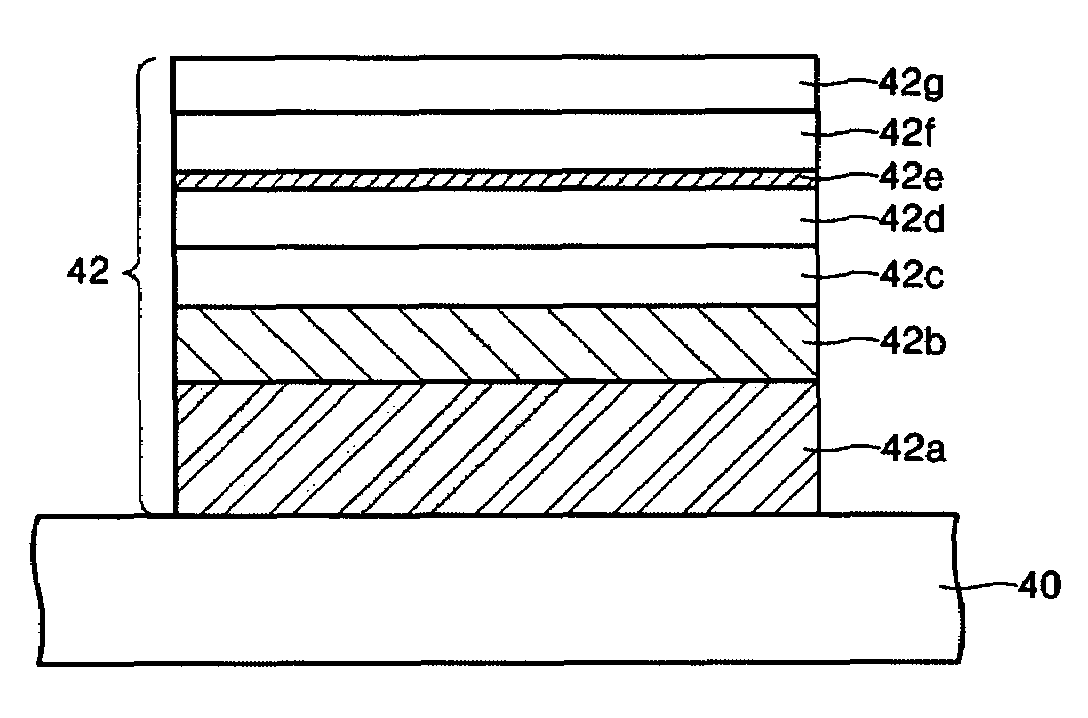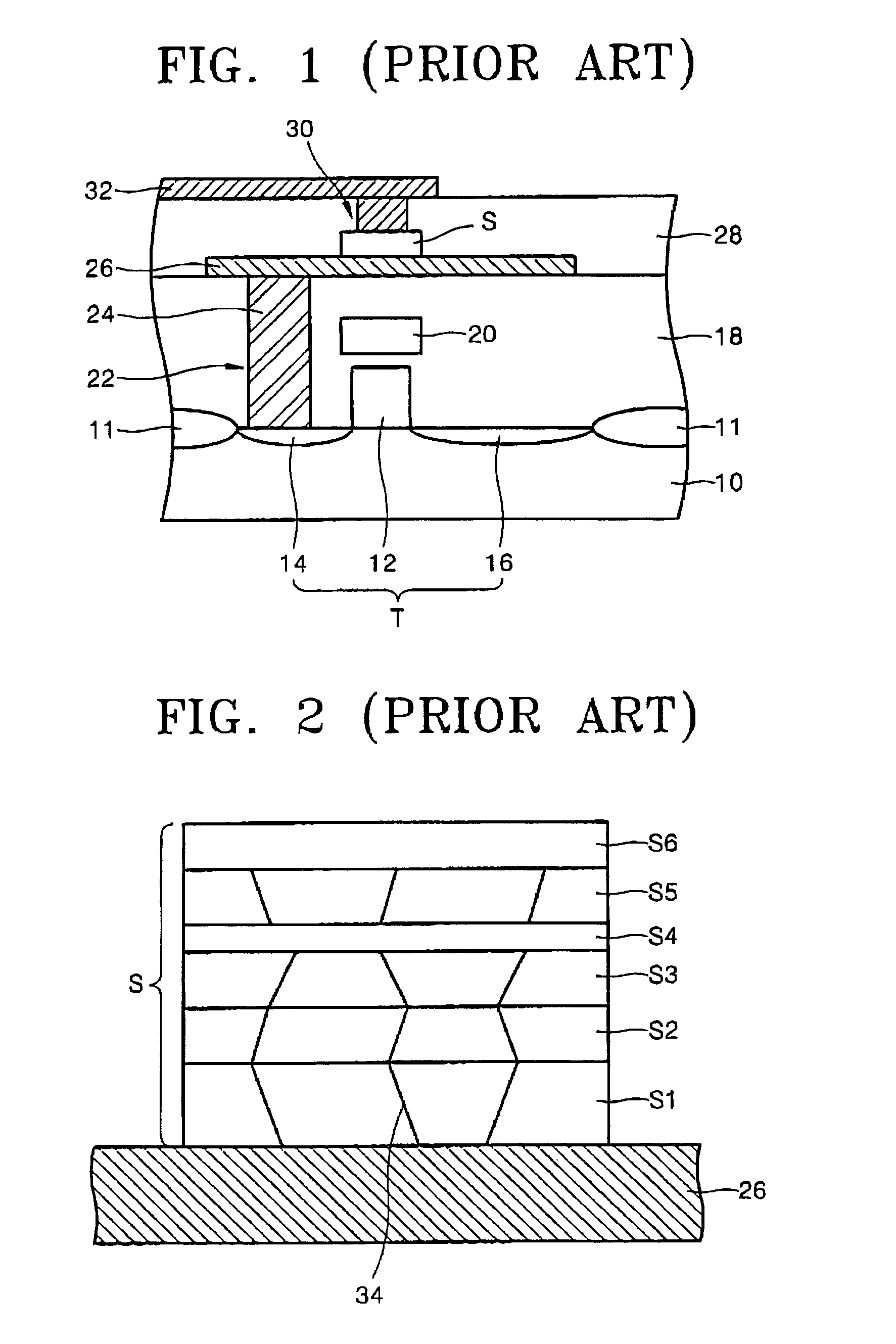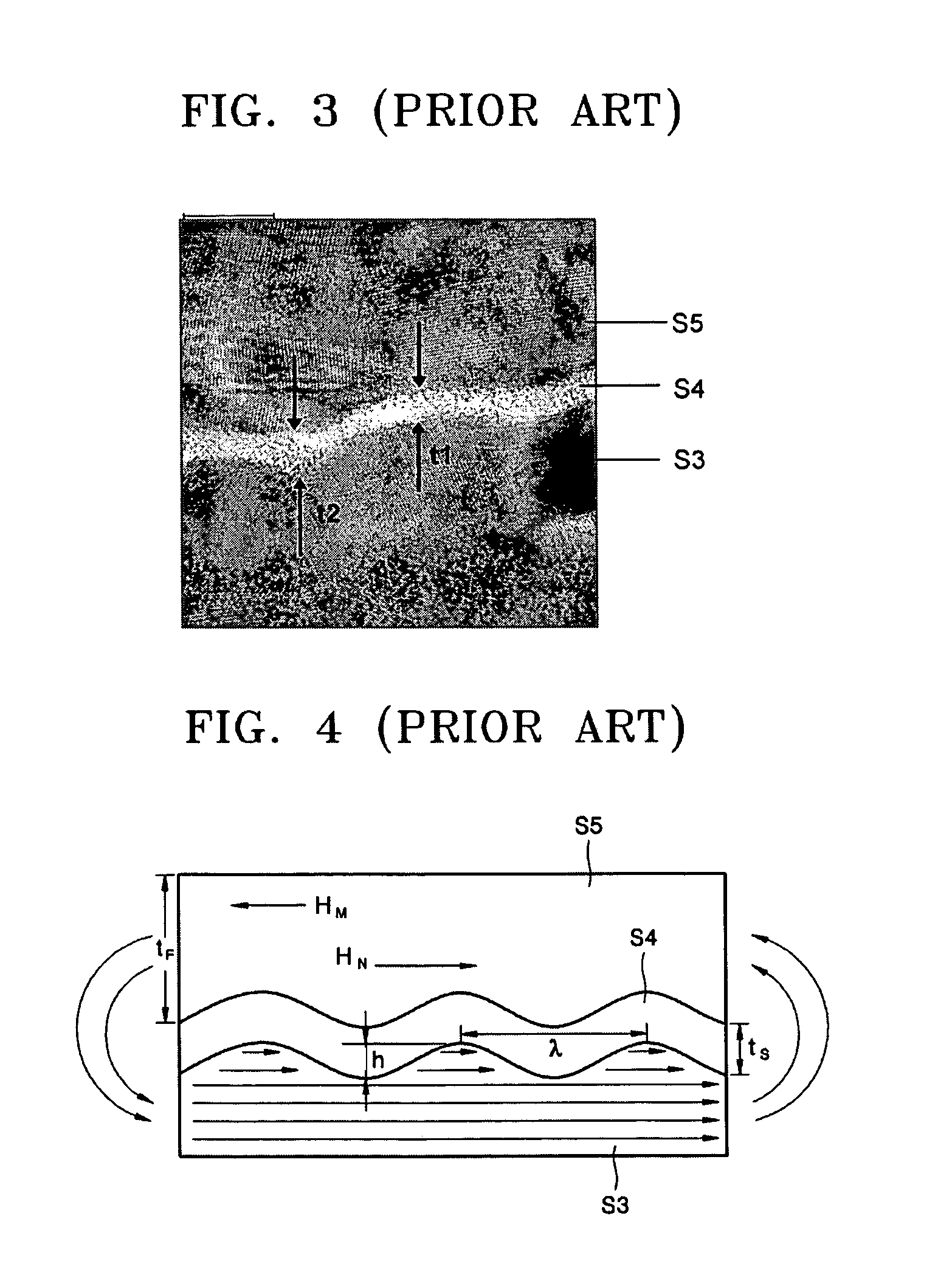Magnetic random access memory (MRAM) having a magnetic tunneling junction (MTJ) layer including a tunneling film of uniform thickness and method of manufacturing the same
a random access memory and magnetic tunneling junction technology, applied in the field of magnetic tunneling junctions (mtj) layers including a uniform thickness tunneling film, can solve the problems of reducing the reliability of the conventional mram device, affecting the reliability of the mram, and preserving data for a relatively long time. the effect of cell resistance and mr reduction, increased insulation breakdown voltage and reduced resistance deviation between cells
- Summary
- Abstract
- Description
- Claims
- Application Information
AI Technical Summary
Benefits of technology
Problems solved by technology
Method used
Image
Examples
first embodiment
[0075]FIGS. 13 and 14 illustrate cross-sectional views of stages in a method of forming an MRAM according to the present invention. Referring to FIG. 13, the lower electrode 42a is formed on the conductive pad layer 40 connected to a source region of a MOSFET. The lower electrode 42a may be formed of a conductive, e.g., metal, electrode made of a single film or a stacked double film. When the lower electrode 42a is formed of a single film, it is preferably formed of a metal such as tantalum, but may be formed of another metal. When the lower electrode 42a is formed of a double film, it is preferably formed of metals such as tantalum / ruthenium, but may be formed of other metals. The flattening film 42b is formed on the lower electrode 42a to a predetermined thickness. The flattening film 42b can be used as a part of the lower electrode. In this case, the lower electrode 42a is a first lower electrode, and the flattening film 42b is a second lower electrode. The flattening film 42b ma...
second embodiment
[0079]FIGS. 15 through 17 illustrate cross-sectional views of stages in a method of forming an MRAM according to the present invention. Referring to FIG. 15, a lower electrode 60 is formed on the conductive pad layer 40. The lower electrode 60 may be formed of a metal compound electrode, such as a titanium nitride (TiN) electrode. Subsequently, an upper surface of the lower electrode 60 is flattened. While it is preferable to use a chemical mechanical polishing method to flatten the upper surface of the lower electrode 60, other flattening methods may be used.
[0080]Referring now to FIG. 16, after flattening the upper surface of the lower electrode 60, the flattening film 42b is formed on the lower electrode 60. Then, the pinning and pinned ferromagnetic films 42c and 42d, the tunneling film 42e, the free ferromagnetic film 42f, and the capping film 42g, are formed sequentially. Next, a second photosensitive film PR2 is formed on the capping film 42g. Then, the stacked films are sequ...
PUM
| Property | Measurement | Unit |
|---|---|---|
| insulation breakdown voltage | aaaaa | aaaaa |
| insulation breakdown voltage | aaaaa | aaaaa |
| thickness | aaaaa | aaaaa |
Abstract
Description
Claims
Application Information
 Login to View More
Login to View More - R&D
- Intellectual Property
- Life Sciences
- Materials
- Tech Scout
- Unparalleled Data Quality
- Higher Quality Content
- 60% Fewer Hallucinations
Browse by: Latest US Patents, China's latest patents, Technical Efficacy Thesaurus, Application Domain, Technology Topic, Popular Technical Reports.
© 2025 PatSnap. All rights reserved.Legal|Privacy policy|Modern Slavery Act Transparency Statement|Sitemap|About US| Contact US: help@patsnap.com



